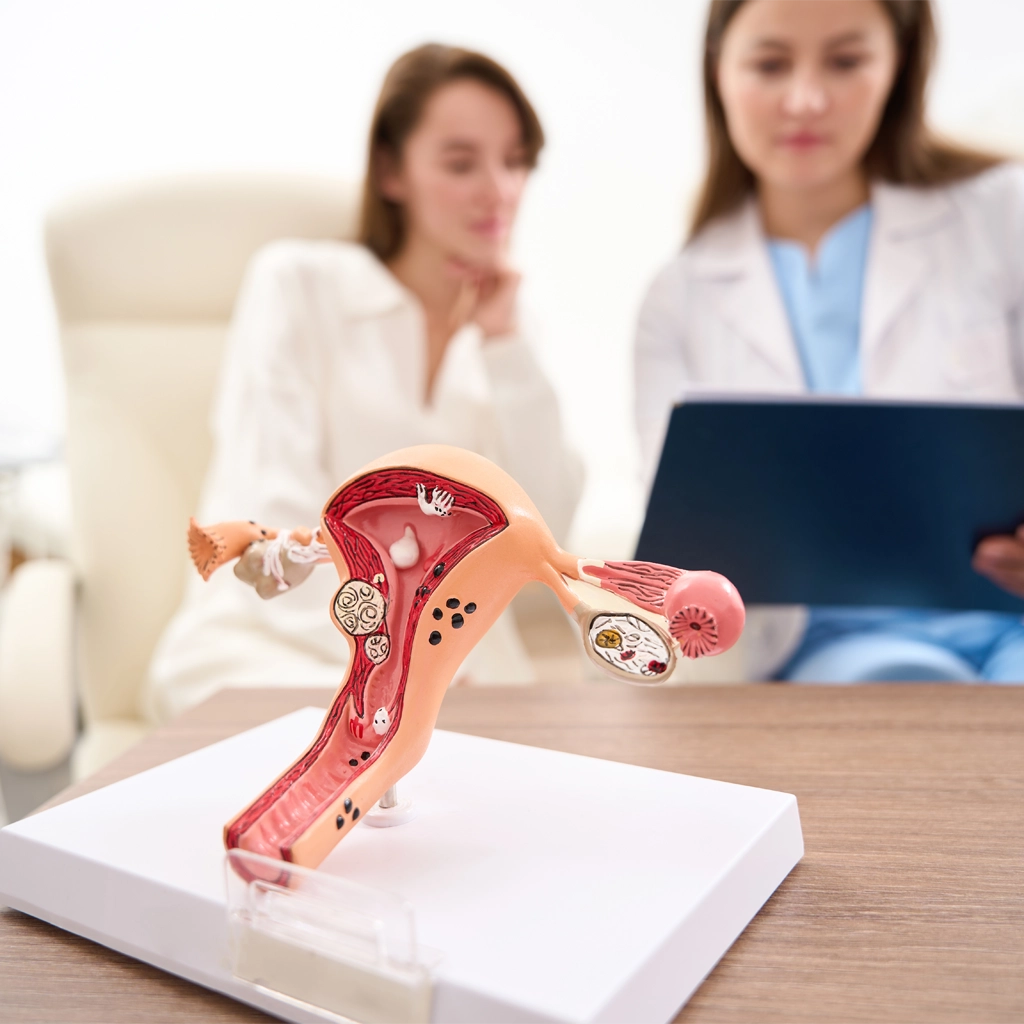Uterine Fibroid Embolization (UFE)
Safe, effective treatment without surgery
Fibroids are benign (non-cancerous) growths in the uterus. As they grow, symptoms can become severe and include cramping, urinary incontinence, and heavy menstrual bleeding. Uterine fibroid embolization (also known as uterine artery embolization) is a minimally invasive procedure to treat fibroids, and a safe, effective alternative to surgical procedures like hysterectomy and myomectomy.
What causes uterine fibroids?
The exact cause of fibroids is unknown, but there are risk factors that can increase a woman’s chance of developing them. These include age, family history, being overweight, and diet. Black women are also four times more likely to develop uterine fibroids than women of other races.
Uterine fibroids can grow on or within the lining of the uterus. They range in size from as small as a grape to as large as a cantaloupe. 20-40% of women over the age of 35 have fibroids. They are hormonally sensitive, so their symptoms can be cyclical like with menstruation.


